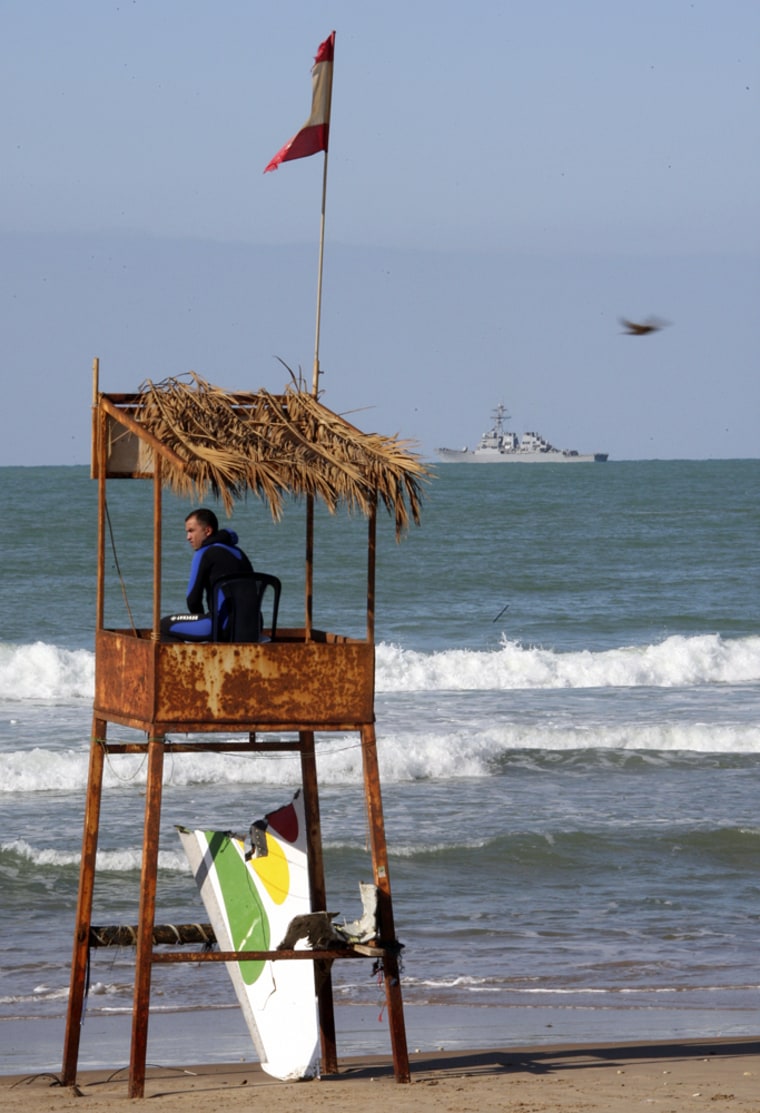The pilot of an Ethiopian Airlines jet did not fly in the direction recommended by the control tower before the plane crashed into the sea, Lebanon's transportation minister said Tuesday.
Transportation Minister Ghazi Aridi said the Beirut tower "asked him to correct, but then he did a very fast and strange turn."
He said it was not clear why that happened or whether it was beyond the pilot's control. The plane went down in flames early on Monday, during a night of lightning and thunderstorms.
Like most other airliners, the Boeing 737 is equipped with onboard weather radar, which the pilot may have used to avoid flying into the storm cells.
No survivors had been found more than 24 hours after the crash, and all 90 people on board are feared dead.
Searchers are trying to find the plane's black box and flight data recorder, which are key to determining the cause of the crash.
Lebanese officials have ruled out terrorism or "sabotage." The plane was headed to the Ethiopian capital, Addis Ababa.
The Lebanese army and witnesses say the plane was on fire shortly after takeoff. A defense official said some witnesses reported the plane broke up into three pieces.
An aviation analyst familiar with the investigation said Beirut air traffic control was guiding the Ethiopian flight through the thunderstorms for the first 2-3 minutes of its flight.
The official, who asked not to be identified because of the sensitivity of the matter, said this was standard procedure by Lebanese controllers to assist airliners departing from the airport in poor weather conditions.
It is unclear exactly what happened in the last 2 minutes of flight, the official said.
'Fire falling from the sky'
Ethiopian Airlines said late Monday that the pilot had more than 20 years of experience. It did not give the pilot's name or details of other aircraft the pilot had flown. It said the recovered bodies included those of Ethiopians and Lebanese.
Rescue teams and equipment sent from the U.N. and countries including the United States and Cyprus were helping in the search Tuesday. Conditions were chilly but relatively clear — far better than Monday, when rain lashed the coast.
Hours after the crash, pieces of the plane and other debris were washing ashore, including a baby sandal, passenger seats, a fire extinguisher, suitcases and bottles of medicine.
"We saw fire falling down from the sky into the sea," said Khaled Naser, a gas station attendant who saw the plane plunge into the sea.
At the Government Hospital in Beirut, Red Cross workers brought in bodies covered with wool blankets as relatives gathered nearby. Marla Pietton, wife of the French ambassador to Lebanon, was among those on board, according to the French Embassy.
Aviation safety analyst Chris Yates said reports of fire could suggest "some cataclysmic failure of one of the engines" or that a bird or debris had been sucked into the engine.
He noted that modern aircraft are built to withstand all but the foulest weather conditions.
"One wouldn't have thought that a nasty squall in and of itself would be the prime cause of an accident like this," said Yates, an analyst based in Manchester, England.
